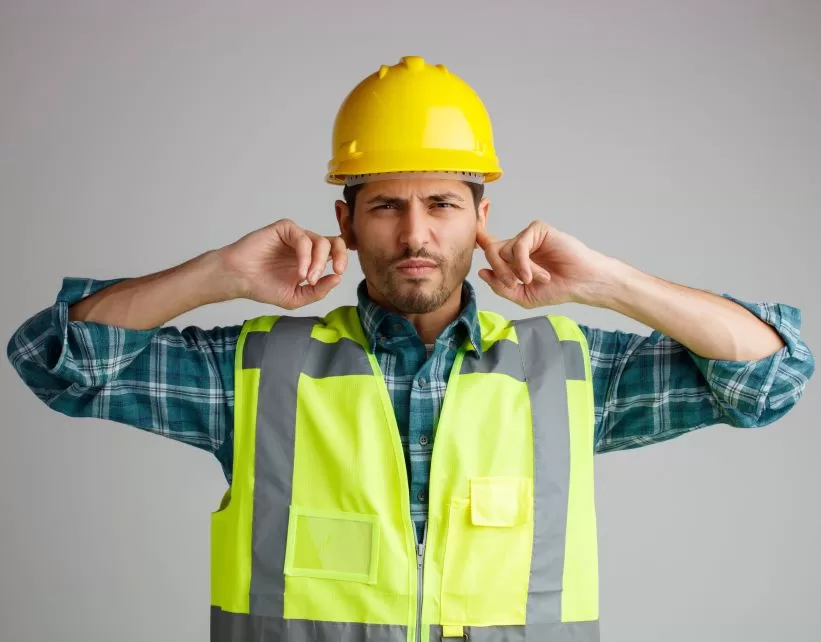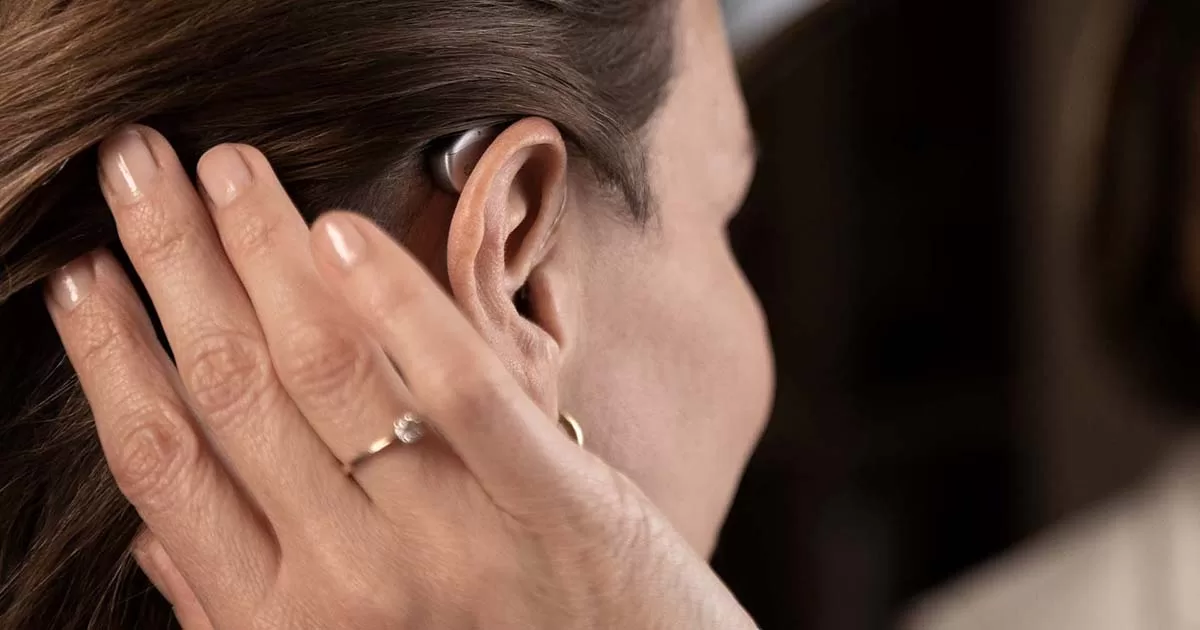Content Navigation
What is Industrial Hearing Loss?
Industrial hearing loss, also known as industrial deafness or noise-induced hearing loss, refers to damage to the auditory system caused by prolonged exposure to loud noises in the workplace. The continual exposure to loud sounds in the workplace damage the delicate structures of the inner ear, leading to irreversible hearing impairment. Prevention through proper hearing protection and workplace noise management is crucial to mitigate this common occupational hazard.
Signs of Industrial Hearing Loss
Common signs of industrial hearing loss include difficulty understanding speech, especially in noisy environments, ringing or buzzing in the ears (tinnitus), conversation may sound muffled or unclear, requiring to turn the TV up loud in order to hear in clearly. Individuals may also experience increased sensitivity to loud noises and struggle to hear high-pitched sounds.
-
Changes in Hearing Sensitivity
Industrial hearing loss results in a decreased sensitivity to certain frequencies of sound, particularly in the higher ranges. Individuals may struggle to hear high-pitched sounds and experience difficulty understanding speech, especially in noisy environments. This decline in hearing sensitivity can significantly impact communication and overall quality of life.
-
Difficulty Understanding Speech in Noisy Environments
Industrial hearing loss sufferers often struggle to hear in noisy environments due to reduced auditory discrimination. Background noise makes it challenging to distinguish speech and other crucial sounds, leading to communication breakdowns and safety risks in workplaces. This difficulty exacerbates social interactions and can diminish overall quality of life without proper intervention and support.
Causes of Industrial Hearing Loss
Industrial hearing loss, also known as industrial deafness, arises from prolonged exposure to loud noises in workplaces. Common sources include heavy machinery, construction equipment, and industrial processes. Over time, the loud sounds damage the delicate structures of the inner ear, leading to irreversible hearing impairment. Lack of proper ear protection and inadequate noise control measures exacerbate the risk of developing this condition.
-
Occupational Hazards
Industrial hearing loss presents significant occupational hazards, impacting workers’ safety and productivity. Impaired hearing can hinder communication, leading to misunderstandings and potentially hazardous situations in noisy environments. Additionally, decreased auditory awareness increases the risk of accidents and injuries, particularly in industries such as manufacturing and construction. Implementing effective hearing conservation programs and providing proper ear protection are essential for mitigating these occupational hazards.
-
Impact on Quality of Life
Industrial hearing loss significantly impairs an individual’s quality of life by disrupting communication, social interactions, and emotional well-being. Difficulty understanding speech and participating in conversations can lead to isolation and frustration. Additionally, the constant presence of tinnitus and the inability to enjoy sounds can diminish overall satisfaction and mental health. Seeking early intervention and support is crucial for managing these challenges and maintaining a fulfilling life.
Online Hearing Tests: A Convenient Screening Option
Online hearing tests offer convenience and accessibility, especially for individuals concerned about industrial deafness. These tests allow users to assess their hearing health from the comfort of their homes or workplaces, eliminating the need for scheduling appointments or traveling to clinics. By utilising quality headphones, online tests can provide accurate results, indicating potential hearing impairments caused by industrial noise exposure. Early detection through these tests facilitates timely intervention and management strategies, empowering individuals to protect their hearing and prevent further deterioration, ultimately promoting better occupational health and well-being.
-
The Need for Regular Hearing Tests
Regular hearing tests are essential for monitoring auditory health and detecting early signs of hearing loss. Especially in industries prone to high noise levels, such as manufacturing or construction, frequent testing helps identify changes in hearing sensitivity caused by occupational exposure. Early detection allows for timely intervention, preventing further damage and facilitating appropriate accommodations to maintain communication and safety in the workplace.
Preventive Measures in Industrial Environments
Preventative measures against industrial hearing loss in workplaces involve a multi-faceted approach. Regular online hearing tests can serve as an initial screening tool, identifying individuals at risk for hearing impairment due to occupational noise exposure. Implementing engineering controls, such as noise barriers and soundproofing equipment, reduces noise levels at the source. Administrative controls, like job rotation and scheduling breaks in quieter areas, help limit exposure duration. Additionally, providing appropriate personal protective equipment, such as earplugs or earmuffs, ensures workers have adequate defence against harmful noise. These comprehensive measures collectively mitigate the risk of industrial hearing loss, safeguarding employees’ hearing health.
-
Workplace Safety Measures
Workplace safety measures for noise include engineering controls like soundproofing and noise barriers, administrative controls such as job rotation and quiet breaks, and the provision of personal protective equipment like earplugs or earmuffs. These measures collectively aim to reduce noise exposure and mitigate the risk of hearing loss in industrial settings.
-
Personal Protective Equipment (PPE)
Personal protective equipment for hearing includes earplugs and earmuffs, which help reduce exposure to harmful noise levels in industrial environments. These devices come in various designs and materials to suit different preferences and levels of noise attenuation, providing essential protection for workers against noise-induced hearing loss.
-
Employee Education and Awareness
Employee education and awareness play a crucial role in preventing noise-induced hearing loss in the workplace. By understanding the risks associated with occupational noise exposure and the importance of using hearing protection, workers can take proactive measures to safeguard their hearing health. Education initiatives also promote early recognition of symptoms, encouraging timely intervention and reducing the likelihood of long-term hearing damage.
Employer’s Role in Preventing Hearing Loss
Employers bear a significant responsibility in preventing hearing loss among their workforce. This includes implementing engineering and administrative controls to reduce noise levels, providing appropriate personal protective equipment, and offering regular hearing screenings. Employers should also educate employees about the risks of noise exposure and promote safe work practices. By fostering a culture of hearing conservation and ensuring compliance with regulations, employers can protect their workers’ hearing health and minimise the incidence of industrial hearing loss in the workplace.
-
Legal Framework and Regulations
The Work Health and Safety Act 2012 outlines the legal framework for industrial hearing loss in many jurisdictions. Under this legislation, employers are obligated to identify and mitigate workplace hazards, including noise-induced hearing loss. They must implement controls such as engineering solutions or personal protective equipment to minimise noise exposure risks. Failure to comply with these regulations may result in penalties, emphasising the importance of hearing conservation in the workplace.
-
Employee Responsibilities
Employees have a responsibility to mitigate the risks of industrial hearing loss by adhering to workplace safety protocols. This includes wearing provided hearing protection consistently in noisy environments and properly maintaining it. Additionally, employees should participate in training programs to understand the hazards of noise exposure and report any concerns about excessive noise levels to their employers promptly. This proactive approach promotes a culture of safety and protects workers’ hearing health.













